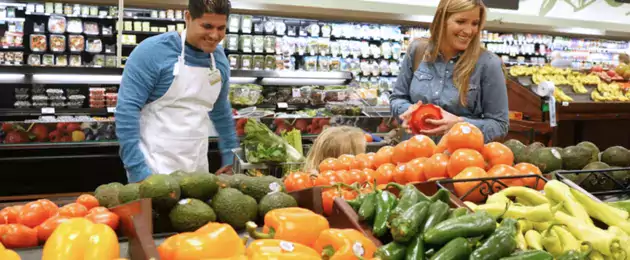Quick Commerce Boom Shows No Sign Of Abating
- 11 January 2022
- By Natalie Berg

Quick commerce, rapid delivery, serving the ‘instant needs’ market. Call it what you’d like, but the uber-convenience boom has arrived and is here to stay.
What was perhaps initially seen as a pandemic pivot will have lasting implications for the retail industry and its supply chains. Forget same day or one-hour delivery; 15-minute delivery of groceries is rapidly becoming the norm in many urban areas around the globe.
But is there really a need for it? Are grocery orders really that time-sensitive? And how financially sustainable is this model? In this blog we delve into some of these topics and explore what 2022 might bring.
Disrupting the disruptors
First, let’s acknowledge that we live in a ubiquitously connected world. A world that is digitally accessible with amenities on tap. A world where we can while away the hours consuming digital content, a world of home comforts and infinite choice. A world with instant access to millions of products to buy, songs to listen to and movies to watch.
We may be living in an on-demand era, but when it comes to grocery shopping missions, up until recently, it was primarily the weekly food shop that was done online. The top-up grocery shop was still very much an analogue experience.
The unparalleled disruption caused by the pandemic not only accelerated online grocery adoption, but it also created an entirely new channel - we are finally witnessing the digitization of the top-up shop.
The 15-minute supermarkets - the likes of Gorillas, GoPuff, Getir and Zapp - have come in all guns blazing, boldly debuting their new brands and elevating the customer experience to new heights, seemingly unfazed by the crowded, low-to-no-margin nature of this industry.
These rapid delivery platforms are essentially acting as a 21st century version of the corner shop, catering to those convenience/crisis-led shopping missions - shoppers who need an ingredient or two for tonight’s dinner, who have run out of nappies or beer, or perhaps are quarantining and struggling to get a suitable slot with one of the big grocers. They are disrupting the status quo and redefining immediacy. Niche, but highly relevant in the current climate.
While shoppers will always say yes to faster delivery and better service, you do have to wonder whether this small segment of the grocery channel is worth disrupting? And I say “small” for three reasons:
1) As above, 15-minute grocery delivery caters to niche shopping missions - top-up, ‘for tonight’ and food to go
2) Let’s face it, this kind of model requires significant population density and will therefore be largely limited to cities
3) Despite best efforts to democratize it, ultra-fast delivery is a premium service catering to time-poor, and often cash-rich, shoppers
According to IGD, the quick commerce sector is currently worth £1.4 billion in the UK, with the opportunity to more than double in size to £3.3 billion - still a distinctively small slice of a £200+ billion sector.
Boom or bust
So is the hype around quick commerce justified? Or will this become another pandemic innovation that quietly fades away as we settle into yet another new normal?
My view is that rapid delivery, in some shape or form, is here to stay. In recent years, the supermarket price wars have been superseded by the delivery wars. Fifteen-minute delivery takes this to the next level, one in which the mainstream supermarkets - and even Amazon - would not historically venture towards.
Why not? Because this model is messy. You are promising customers the moon on a stick and one bad experience can be detrimental to the brand. It is an unproven and wildly capital-intensive model, requiring hyper-proximity to the customer (if you’re going to deliver within 15 minutes, you’d better be within a mile or two). Not unlike the hard discounters, you also have to significantly sacrifice on range in order to make the economics stack up.
But time is a precious commodity and the ultra-fast delivery providers have now ripped the plaster off. This is convenience on steroids. It’s a deepening of the democratization of white glove service, a trend that had long been brewing pre-COVID.
To some, quick commerce perhaps represents a dystopian future where we never need to leave our sofa when we run out of bread. To others, it’s a case of going back to the future - the milkman of the digital age.
Regardless, it would be difficult to wean customers off now that they have had a taste of this uber convenience, leaving the market with no choice but to follow. We have already witnessed the start of the inevitable consolidation within this nascent sector, as well as an increasing number of partnerships with the grocers themselves. In 2022, we could very well see the acquisition of a rapid delivery provider by one of the major supermarkets.
Quick commerce will remain a niche segment of the online grocery channel, but certainly one not to be ignored with much wider implications for retail supply chains.
Whether it’s the practical processes associated with microfulfilment (such as automation and the integration of man and machine), transportation modelling for the ‘last mile’ or the broader concept of moving supply chains closer to consumers, the impact of quick commerce may be felt far beyond its immediate sphere of operations into 2022 and beyond.

